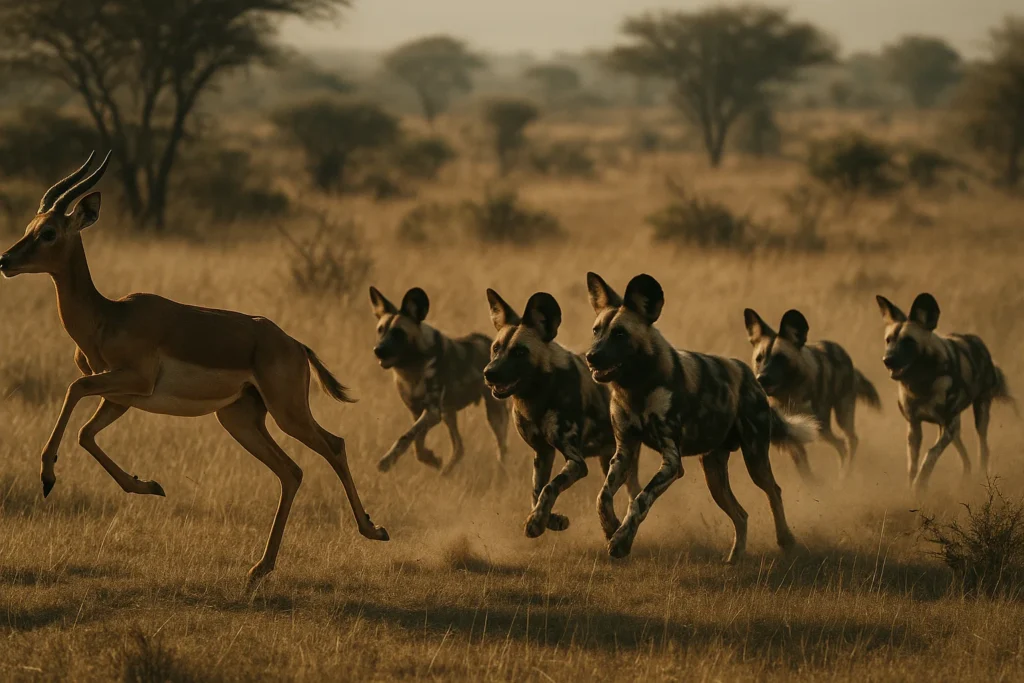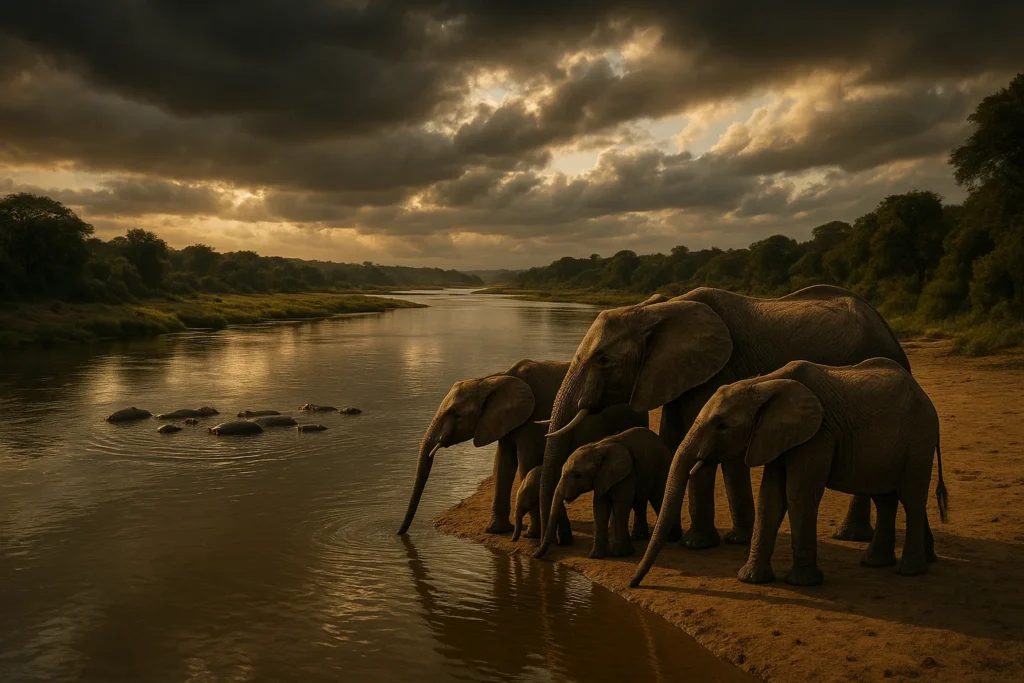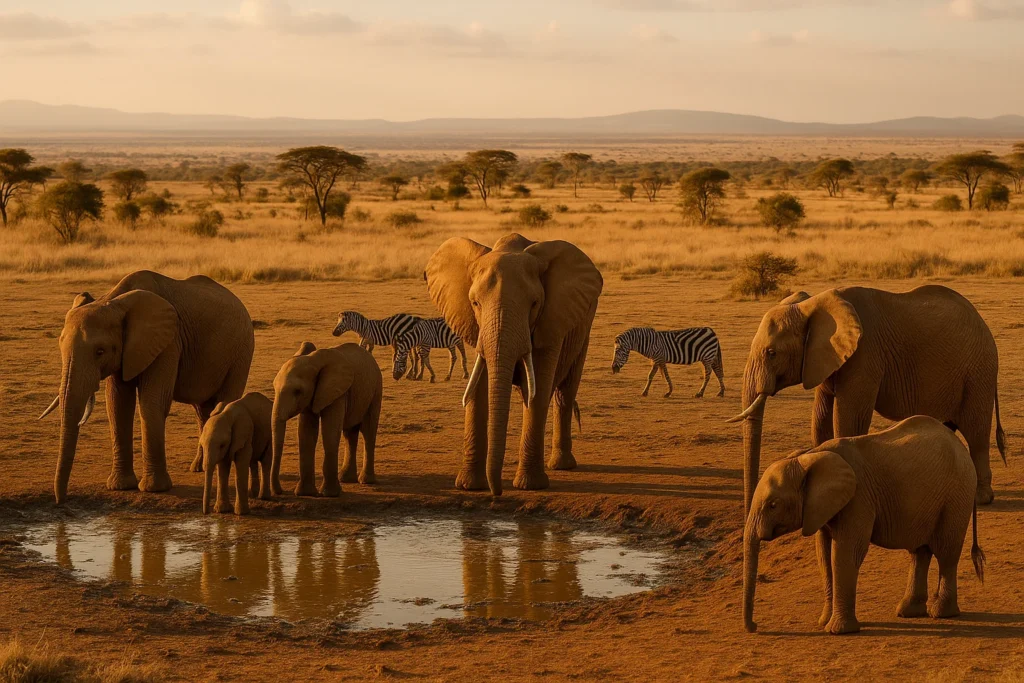Kruger National Park is world-famous for its Big Five, but true wildlife lovers know that some of the park’s most exciting moments come from spotting the rarities. African wild dogs, honey badgers, and elusive antelopes are just a few of the lesser-seen species that make Kruger a truly wild place. This guide focuses on these rare species and how to improve your chances of seeing them.
Rare species of Kruger National Park: spotlight on the wild dogs, honey badgers & more
Kruger National Park is world-famous for its Big Five, but true wildlife lovers know that some of the park’s most exciting moments come from spotting the rarities. African wild dogs, honey badgers, and elusive antelopes are just a few of the lesser-seen species that make Kruger a truly wild place. This guide focuses on these rare species and how to improve your chances of seeing them.
African wild dogs (painted wolves)
Known for their striking coats and complex pack dynamics, African wild dogs are among the most thrilling predators to see in Kruger.
- Estimated population: Around 400 individuals in 50+ packs across Greater Kruger.
- Behavior: Highly social, fast-moving, and often active in early mornings and late afternoons.
- Best regions: Central Kruger (Satara), southern areas near Skukuza, and parts of the north.
- Viewing tip: Look for them at dawn or dusk near waterholes or in open plains. Packs are mobile, so timing and luck matter.
Honey badgers (ratels)
Small but fearless, the honey badger has a reputation for toughness. Despite their notoriety, they are rarely seen.
- Size: Around 12 kg, with a distinctive grey back and powerful claws.
- Behavior: Solitary and mostly nocturnal or crepuscular.
- Best regions: Northern Kruger and less-trafficked roads.
- Viewing tip: Drive slowly at dusk, especially near dry riverbeds or termite mounds. Even a brief sighting is a major highlight.
Other rare species worth spotting
Roan and sable antelope
Elegant and powerful, these antelope species are considered special sightings due to their low numbers in the park.
- Roan antelope: Best seen in northern Kruger.
- Sable antelope: Spotted occasionally in mopane woodland zones.
Cape clawless otter
Often found near quiet waterways, these otters are shy and typically seen by patient observers.
- Best regions: Rivers and dams in the central and northern park.
- Viewing tip: Scan riverbanks during early morning drives.
Nocturnal carnivores
Species like civets, genets, servals, and aardvarks are active at night and require either luck or a guided night drive.
- Viewing tip: Book at least one night safari to boost chances.
Why rare species matter
- Enrich your safari: Going beyond the Big Five adds depth and diversity to your experience.
- Unique photographs: Less-seen animals make for more memorable images.
- Support conservation: Interest in these species highlights the importance of lesser-known wildlife.
Tips for spotting rare species in Kruger
- Stay longer: The more time you spend, the better your odds.
- Use quieter roads: Lesser-used routes often yield surprising sightings.
- Drive early and late: Rare species are more active in low light.
- Hire a guide: Expert trackers know where and when to look.
- Bring the right gear: A long lens and good low-light performance can make the difference.
Conclusion
Kruger National Park is more than its iconic Big Five. Seek out the rare, elusive species and you’ll discover a new layer of wilderness and wonder. Whether it’s the lightning-fast wild dogs or the fierce honey badger, every encounter with these animals feels like a true safari triumph. For more insights and wildlife guides, explore WhySafari.com.
FAQs
Yes, they are listed as endangered, with limited populations across Africa.
Dry season (May–September) offers better visibility and more predictable animal movement.
Quite rare. They are elusive and mostly active at night.
Yes. Camps like Satara, Punda Maria, and Olifants are located near rare species habitats.
Some private guides offer customized routes focusing on rarities.
Yes. SANParks and private lodges offer night drives in select areas.
A telephoto lens (300mm+), fast shutter speeds, and high ISO capability are helpful.
Absolutely. Just follow park rules and drive slowly.
No. They are shy and avoid human interaction.
Yes. Apps like Latest Sightings can alert you to recent rare animal activity.






